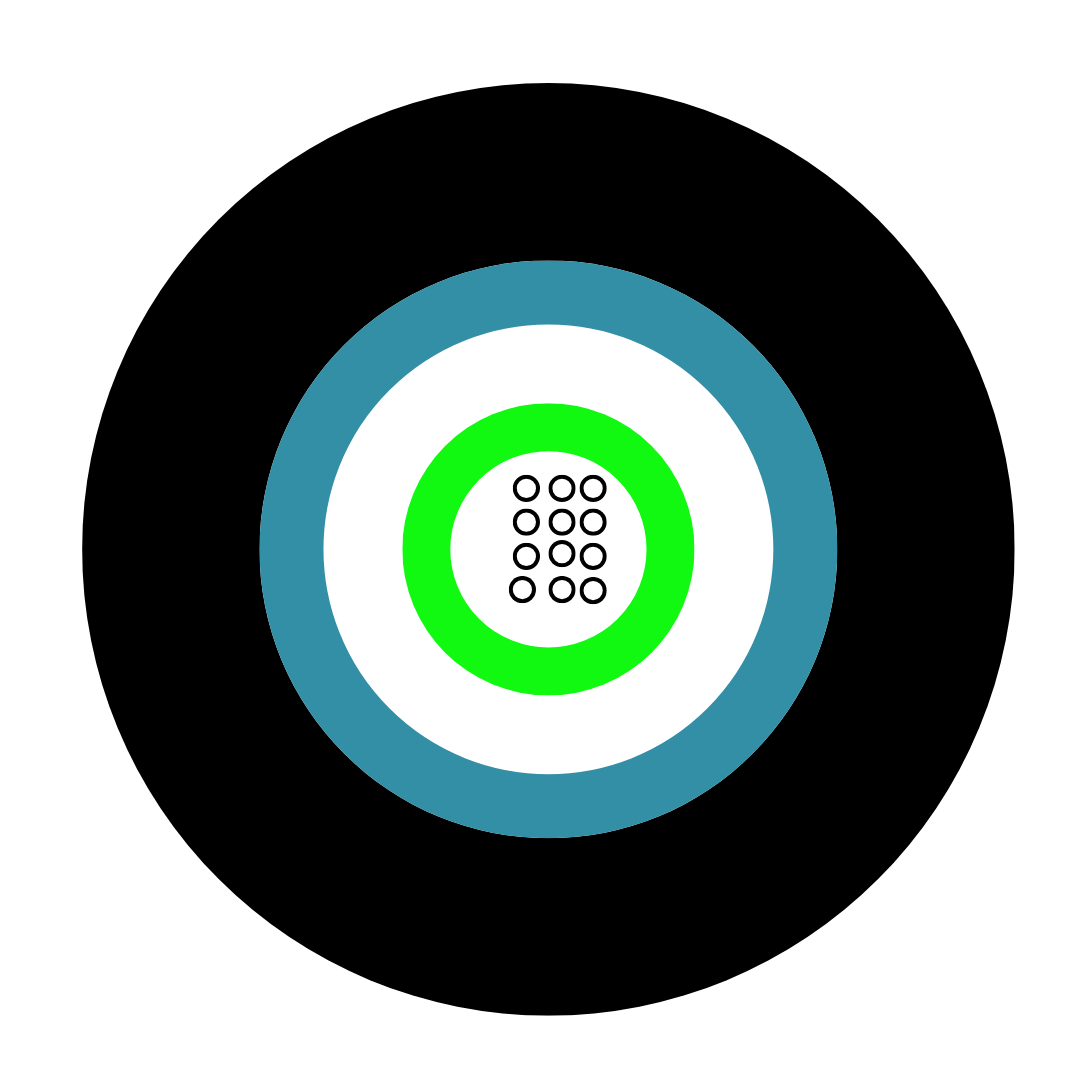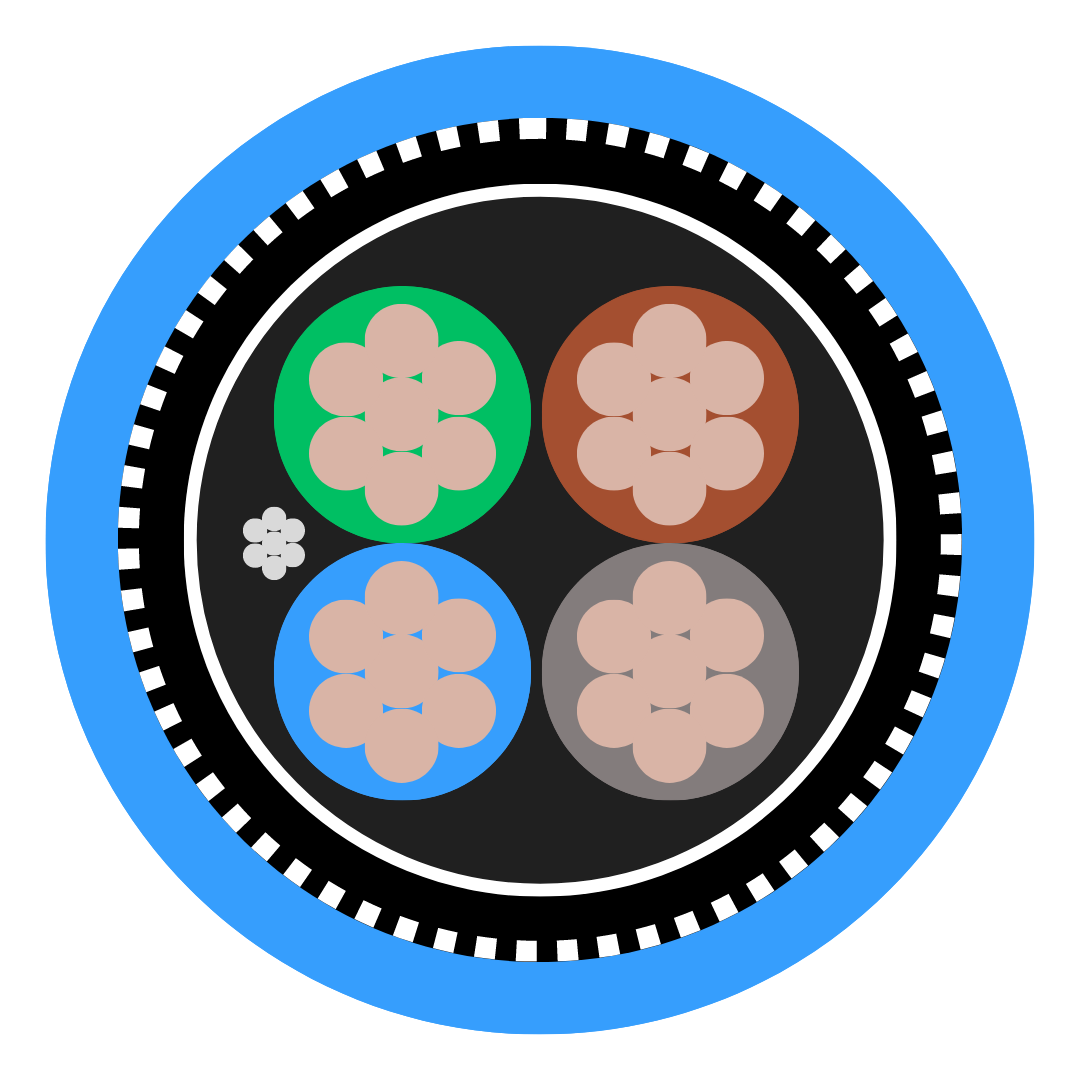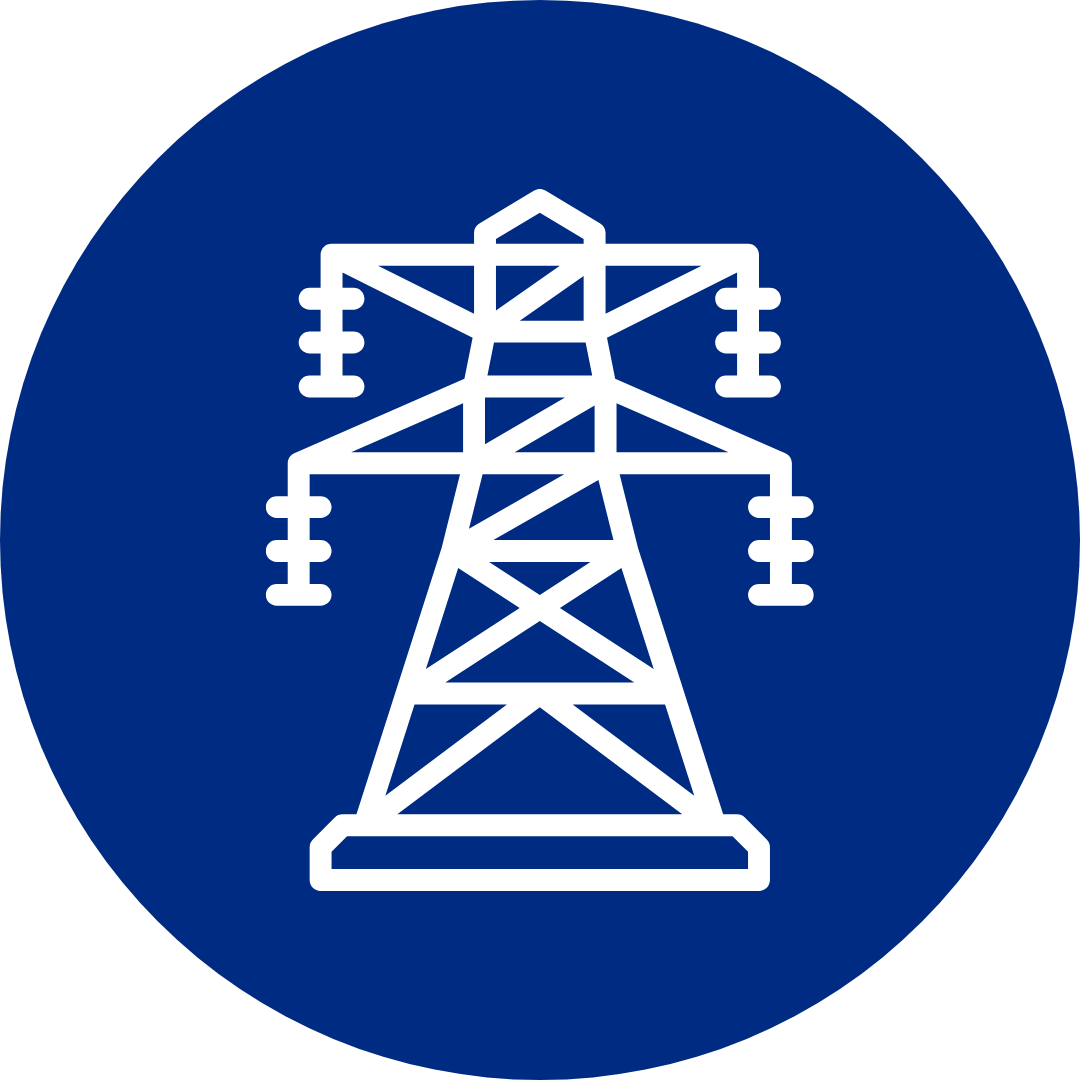Electromagnetic interference (EMI) can quietly disrupt even the most reliable coaxial cable systems. It distorts signals, weakens transmission quality, and can cause costly downtime in communication or data networks. Mitigating EMI in coaxial cables ensures stable, high-quality signal performance and prevents unwanted interruptions. Understanding how EMI occurs and how to control it helps maintain consistent network reliability.
Coaxial cables already include shielding to protect against interference, but installation choices and environmental factors still play a major role. Proper grounding, cable routing, and the use of quality materials can make a significant difference. By applying proven design and installation techniques, it becomes possible to reduce EMI and extend the life of the entire cable system.
Learning how to identify, prevent, and manage EMI helps create stronger and more efficient network connections. With the right approach, even complex systems can maintain clean, uninterrupted signal flow.
Key Takeaways
EMI control protects signal quality and system reliability.
Effective design and installation reduce interference risks.
Regular testing ensures long-term EMI protection.
What Is Electromagnetic Interference (EMI)?
Electromagnetic interference (EMI) is unwanted energy that disturbs the normal operation of electrical or electronic equipment. It can come from natural or man-made sources and often affects signal quality, especially in communication cables and sensitive circuits.
Common Sources Of EMI
EMI can originate from radiated or conducted sources. Radiated EMI travels through the air as electromagnetic waves, while conducted EMI passes through physical connections like power or signal lines.
Common man-made sources include:
Switching power supplies and motors, which generate high-frequency noise.
Wireless transmitters, such as mobile phones or Wi-Fi routers.
Lighting systems, especially fluorescent and LED types with electronic ballasts.
Computers and digital circuits, which switch rapidly and emit electromagnetic fields.
Natural sources like lightning and solar activity also create bursts of electromagnetic energy. These can induce currents in nearby conductors and disrupt normal operation.
The strength of EMI depends on factors such as frequency, distance, and shielding. Devices that lack proper electromagnetic compatibility (EMC) design are more likely to experience interference.
How EMI Disrupts Signal Transmission
EMI affects signal transmission by introducing unwanted voltages or currents into circuits. In coaxial cables, this can distort or mask the intended signal, reducing clarity and reliability.
Interference can occur through inductive coupling, capacitive coupling, or radiated fields. Inductive coupling happens when a changing magnetic field from one conductor induces a current in another. Capacitive coupling occurs when electric fields transfer energy between conductors separated by insulation.
These effects cause signal loss, data errors, or noise that degrades performance. High-frequency signals are especially sensitive because even small disturbances can alter waveform integrity.
Maintaining good grounding, shielding, and cable design helps limit these disruptions and supports stable EMC performance.
How EMI Affects Coaxial Cable Performance
Electromagnetic interference (EMI) disrupts the flow of electrical signals through coaxial cables, reducing their ability to carry clean, accurate data. It weakens signal strength, introduces unwanted noise, and causes communication systems to perform below expected levels.
Signal Loss And Distortion
When EMI interacts with a coaxial cable, it introduces unwanted electrical energy that interferes with normal signal transmission. This can cause signal attenuation, where the signal weakens as it travels along the cable.
External sources such as power lines, radio transmitters, or nearby electronic devices often produce this interference. High‑frequency signals are especially vulnerable because they rely on precise impedance and shielding to maintain signal integrity.
The result is signal distortion, where the original waveform changes shape. This distortion may lead to timing errors, poor synchronisation, and inaccurate data transfer. In digital systems, even small amounts of EMI can corrupt bits of information, leading to data loss or retransmission.
Proper shielding and grounding help reduce these effects, but damaged or poorly installed cables can still allow interference to leak through.
Common EMI Effects | Result on Cable Performance |
Signal attenuation | Reduced signal strength |
Waveform distortion | Loss of accuracy |
Bit errors | Data corruption or retransmission |
Impact On Communication And Broadcast Quality
In communication and broadcast systems, EMI can cause noticeable degradation in audio, video, and data signals. For example, television and radio transmissions may experience static, flickering, or dropouts when interference disrupts the carrier signal.
Network systems that depend on coaxial cables for high‑speed data transfer may suffer from reduced bandwidth and packet errors. This leads to slower performance and unstable connections.
Even small amounts of EMI can affect timing and synchronisation between devices. In professional broadcasting or critical data links, these disruptions can reduce reliability and increase maintenance costs.
Maintaining signal integrity requires proper cable routing, adequate shielding, and regular inspection to ensure that interference sources remain isolated from sensitive coaxial lines.
Design Features That Reduce EMI In Coaxial Cables
Effective electromagnetic interference (EMI) reduction in coaxial cables depends on how well the cable structure blocks external noise and limits internal signal leakage. Shielding design, insulation materials, and grounding integrity all influence how efficiently a cable maintains signal clarity and reduces unwanted interference.
Shielding Types: Foil, Braid, And Dual-Shield Options
Shielding is the first line of defence against EMI. Coaxial cables often use foil, braided, or dual-shield constructions to block external electromagnetic fields. Each type offers different levels of protection and flexibility.
A foil shield uses a thin aluminium or copper layer wrapped around the dielectric. It provides nearly complete coverage (close to 100%) and is effective against high-frequency interference. However, it can be fragile and less flexible.
A braided shield consists of interwoven copper or tinned copper strands. It offers mechanical strength and better performance at lower frequencies but provides less coverage than foil.
A dual-shield or quad-shield design combines foil and braid layers. This mix enhances both low- and high-frequency EMI protection. It also improves durability and grounding continuity, making it ideal for environments with strong interference sources.
Shield Type | Material | Coverage | Key Strength |
Foil | Aluminium/Copper | ~100% | High-frequency EMI blocking |
Braid | Copper | 70–95% | Flexibility and durability |
Dual | Foil + Braid | 95–100% | Broad-frequency protection |
Dielectric Insulation And Conductor Quality
The dielectric insulation separates the inner conductor from the shield and helps maintain a consistent impedance. Materials such as polyethylene (PE) or foam PE reduce signal loss and limit internal reflections that can worsen EMI.
High-quality copper conductors with smooth surfaces improve signal transmission and reduce resistance. Poor conductor quality can cause uneven current flow, increasing the chance of electromagnetic coupling.
Maintaining uniform spacing between the conductor and shield is critical. Any deformation in the dielectric can alter impedance and make the cable more sensitive to interference. Precision manufacturing ensures stable signal performance across frequencies.
Connector Integrity And Grounding Practices
Connectors and grounding play a major role in EMI control. A poorly fitted connector can break the shield’s continuity, allowing interference to enter. Using connectors with 360-degree shield termination helps maintain full coverage and reduces leakage points.
Proper grounding ensures unwanted currents flow safely to earth instead of through the signal path. The shield should connect to a low-impedance ground at one or both ends, depending on the system design.
Regular inspection of connector joints prevents corrosion or loose fittings that can degrade EMI protection. In high-performance systems, using ferrite chokes near connectors further suppresses high-frequency noise and stabilises signal quality.
Installation Techniques To Minimise Interference
Effective installation reduces electromagnetic interference (EMI) by controlling how coaxial cables interact with nearby electrical sources, grounding points, and connection interfaces. Careful routing, proper grounding, and the use of quality connectors all help maintain reliable signal transmission and prevent unwanted noise.
Cable Routing And Separation From Power Lines
Routing coaxial cables correctly plays a major role in limiting EMI. Cables should run parallel but separated from power lines, ideally by at least 150 mm in low-voltage environments and more in high-voltage areas. This distance helps reduce electromagnetic coupling between the signal and power circuits.
Avoid running coaxial cables near fluorescent lighting, motors, or wireless transmitters. When crossing power cables is unavoidable, they should intersect at a 90-degree angle to minimise induced interference.
Installing cables in metallic conduits or trays can also provide additional shielding, especially in industrial or data centre environments. Using cable ties or supports to keep cables organised prevents loops that might act as antennas and attract unwanted signals.
Careful planning of cable paths before installation ensures consistent signal integrity and reduces the need for later adjustments.
Proper Grounding And Bonding Methods
Grounding and bonding divert unwanted currents and stabilise voltage differences between connected components. Each coaxial cable shield should connect to a low-impedance ground point to allow excess electrical energy to discharge safely.
The outer conductor or shield must be bonded to the connector shell and equipment chassis. This creates a continuous path to ground and prevents floating potentials that can lead to interference or equipment damage.
Grounding techniques include using star grounding for centralised systems or single-point grounding for smaller installations. The choice depends on system layout and frequency range.
Regular inspection of grounding connections ensures that corrosion, loose fittings, or paint coatings do not interrupt conductivity. A well-maintained grounding network significantly improves EMI control and overall system reliability.
Using High-Quality Connectors And Fittings
Connectors and fittings influence how well coaxial cables maintain shielding integrity. Poorly fitted or low-quality connectors can introduce gaps that allow electromagnetic noise to enter the signal path.
Use precision-machined connectors made from conductive materials such as brass or copper with nickel or gold plating for durability. Each connector should match the cable’s impedance rating, typically 50 or 75 ohms, to prevent reflections and signal loss.
Ensure that the shield and centre conductor make full contact when terminating the cable. Improper crimping or soldering can weaken the connection and create points of interference.
Protect exposed joints with heat-shrink tubing or conductive tape to maintain shielding continuity. Investing in quality fittings reduces long-term maintenance needs and helps preserve consistent signal performance across the network.
Testing And Maintaining Cable Systems For EMI Protection
Reliable EMI protection depends on accurate testing and consistent maintenance. Engineers use specialised instruments to detect interference sources, verify shielding performance, and confirm compliance with electromagnetic standards. Regular inspections help identify faults early, preventing data loss and maintaining cable integrity in demanding environments.
Tools And Equipment For EMI Testing
Accurate EMI testing requires instruments that measure unwanted electromagnetic signals and evaluate shielding effectiveness. Spectrum analysers are essential tools that display signal strength across frequencies, helping locate interference sources and confirm compliance with EMC limits.
Network analysers measure impedance and reflection characteristics, ensuring proper cable termination and minimal signal loss. EMI detectors and field strength meters identify localised interference hotspots around connectors or junctions.
Engineers often use signal generators to inject known frequencies into a system and observe how well the cable rejects interference. For routine verification, handheld cable testers check continuity, grounding, and shield integrity.
The table below summarises key testing tools and their primary uses:
Tool | Primary Function |
Spectrum Analyser | Detects and measures EMI frequency levels |
Network Analyser | Tests impedance and reflection |
EMI Detector | Locates interference sources |
Signal Generator | Simulates EMI for testing |
Cable Tester | Checks continuity and shield grounding |
Routine Inspection And Maintenance Tips
Routine maintenance preserves EMI protection and extends system life. Technicians should inspect cable shields and connectors for corrosion, cracks, or loose fittings that can weaken grounding and allow interference.
Verify grounding connections regularly to ensure low-impedance paths for stray currents. Poor grounding increases susceptibility to conducted EMI. Check cable routing to keep coaxial lines separated from power cables and high-frequency emitters.
Clean connectors with approved solvents to remove oxidation and maintain consistent contact resistance. Replace damaged ferrite chokes or worn shielding materials promptly.
Maintenance logs should record inspection dates, test results, and corrective actions. Keeping detailed records helps track degradation trends and supports compliance with EMI and EMC standards.
Choosing The Right Coaxial Cable For Low-Interference Applications
Selecting an appropriate coaxial cable helps maintain clean signal transmission and limits electromagnetic interference (EMI). The cable’s shielding type, conductor size, and build quality directly affect how well it resists noise and signal loss.
RG6 Vs RG11 And Other Common Types
Different coaxial cable types suit different distances and signal frequencies. RG6 is common in home and commercial installations because it balances flexibility, moderate cost, and good shielding. It works well for television, broadband, and moderate-length RF connections.
RG11 has a thicker conductor and lower signal loss, making it better for long cable runs or outdoor use. However, it is less flexible and harder to install in tight spaces.
The table below summarises typical characteristics:
Cable Type | Impedance (Ω) | Shielding Quality | Typical Use | Max Run (approx.) |
RG6 | 75 | Good (dual/quad shield) | TV, broadband | ~45 m |
RG11 | 75 | Very good | Long runs, outdoor | ~90 m |
RG58 | 50 | Moderate | Radio, short RF links | ~15 m |
LMR-400 | 50 | Excellent | High-frequency, low loss | ~60 m |
When selecting a type, users should match impedance to the system, keep cable runs short when possible, and ensure connectors maintain shield continuity.
Applications That Demand Superior Shielding
High-interference environments require coaxial cables with quad shielding or foil plus braided layers. These layers block external electromagnetic and radio-frequency noise from nearby power lines, wireless transmitters, or industrial machinery.
In data centres, broadcast studios, and aerospace systems, signal integrity depends on consistent shielding performance. Even small EMI leaks can distort or weaken signals.
For such conditions, low-loss cables like LMR-400 or LMR-600 are preferred. They combine dense shielding with larger conductors to reduce attenuation. Proper grounding and connector termination further strengthen protection, ensuring that sensitive equipment continues to function reliably even in electrically noisy surroundings.
Frequently Asked Questions
What is the main component that helps block electromagnetic interference in coaxial cables?
The shield is the main component that blocks EMI in coaxial cables. It surrounds the inner conductor and prevents external electromagnetic fields from affecting the signal. Common shielding materials include braided copper, aluminium foil, or a combination of both. A properly grounded shield ensures unwanted currents escape safely.
How can we mitigate electromagnetic interference?
Mitigation methods include grounding, shielding, and the use of ferrite chokes or filters. Ferrite beads around connectors absorb high-frequency noise, while filters such as high-pass filters can block unwanted low-frequency interference. Maintaining cable integrity and using quality connectors also reduce EMI risk.
Are coaxial cables immune to electromagnetic interference?
Coaxial cables are resistant but not immune to EMI. Their design reduces interference, yet strong external fields or poor installation can still cause problems. Proper shielding, grounding, and separation from power cables are necessary to maintain performance.
How to protect coax cable from lightning?
To protect coaxial cables from lightning, install lightning arrestors or surge protectors at entry points. Ground all cable shields and equipment according to electrical safety standards.
Avoid running cables near tall metal structures or outdoor antennas without protection.
What are the best practices for routing coaxial cables to minimise EMI risk?
Keep coaxial cables away from power lines, motors, and fluorescent lights. When crossing power cables, do so at right angles to reduce coupling. Avoid sharp bends and excessive lengths, which can weaken shielding and increase signal loss.
What is the best material to block eMF?
Metals such as copper, aluminium, and nickel are effective at blocking electromagnetic fields due to their high conductivity. Copper offers the best shielding for most coaxial cables because it provides both flexibility and strong attenuation of EMI.
How to get rid of cable interference?
Use ferrite cores, filters, and proper grounding to eliminate cable interference. Ferrite components suppress high-frequency noise, while inline filters target specific unwanted frequencies.Inspect cables for damage or loose connectors, as these can allow EMI to enter the signal path.
Alarm Cable
Arctic Grade Cable
Armoured Cable
Audio & Speaker Cable
Auto Cable
Bare Copper
Belden Equivalent Cable
Co-axial Cable
Data Cable
DC Telecom Cable
Defence Standard Cable
Emergency Lighting & Fire Detection Cable
EV Cable
Festoon
![Loose Tube Fibre Cross Section]()
Fixed Wiring PVC & LSOH Cable
Flatform
Flexible Control Cable
Flexible PVC Cable
Flexible Rubber Cable
General Wiring Cable PVC & LSOH
High Temperature Cable
High Voltage Cable
![5308 p1 t2 cat Cross Section]()
LSOH Flexible Cable
Medium Voltage Cable
NYY & N2XH Cable
Protected Wiring Cable
Silicone Cable
Solar Cable
Split Concentric Cable
Spiral Cable
Temporary Power Cable
Tri-Rated Cable
Welding Cable
Alarm Cable
Arctic Grade Cable
Armoured Cable
Audio & Speaker Cable
Auto Cable
Bare Copper
Belden Equivalent Cable
Co-axial Cable
Data Cable
DC Telecom Cable
Defence Standard Cable
Emergency Lighting & Fire Detection Cable
EV Cable
Festoon
![Loose Tube Fibre Cross Section]()
Fixed Wiring PVC & LSOH Cable
Flatform
Flexible Control Cable
Flexible PVC Cable
Flexible Rubber Cable
General Wiring Cable PVC & LSOH
High Temperature Cable
High Voltage Cable
![5308 p1 t2 cat Cross Section]()
LSOH Flexible Cable
Medium Voltage Cable
NYY & N2XH Cable
PAS - BS5308 Instrumentation Cable
Protected Wiring Cable
RS-232 Cable
RS-485 Cable
Silicone Cable
Solar Cable
Split Concentric Cable
Spiral Cable
Telephone Cable
Traffic Signal Cables
Temporary Power Cable
Tri-Rated Cable
Welding Cable
Airports
Automation & Process Control
![Automotive]()
Building & Construction
Communication & Telecommunication
Data Centres
Defence
![DNO 1]()
E-Mobility
Food & Beverage
Marine & Offshore
Mining, Drilling & Tunnelling
OEMs
Oil, Gas & Petrochemical
Rail & Metro
Renewable Energy
Switchgear
Power
Water Treatment













































